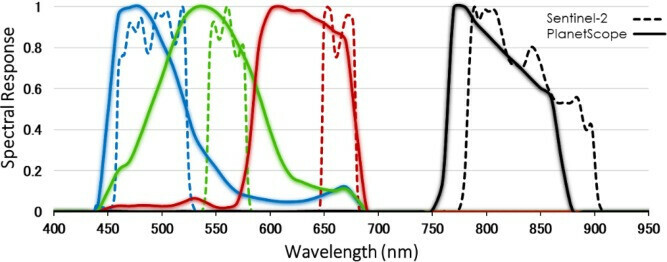Hello,
We are seriously looking into PlanetScope data for agriculture farm monitoring. While speaking to a few people from the industry we were told that Planet.com images are not ‘calibrated’ so they are difficult to use and we would have trouble with them. Can someone explain what they mean by this and any issues to keep in mind while making use of PlanetScope data?
Also, the spectral range of PlanetScope’s RGB seem to be heavily intersecting with each other unlike that of Sentinal-2. PlanetScope is also sensitive to a much wider bands than Sentinal-2.
This also seems like an issue as the channels are wide and not independant.
Lastly, can we get any cloud mask for PlanetScope data like we do with s2cloudless?
Thanks so much!

